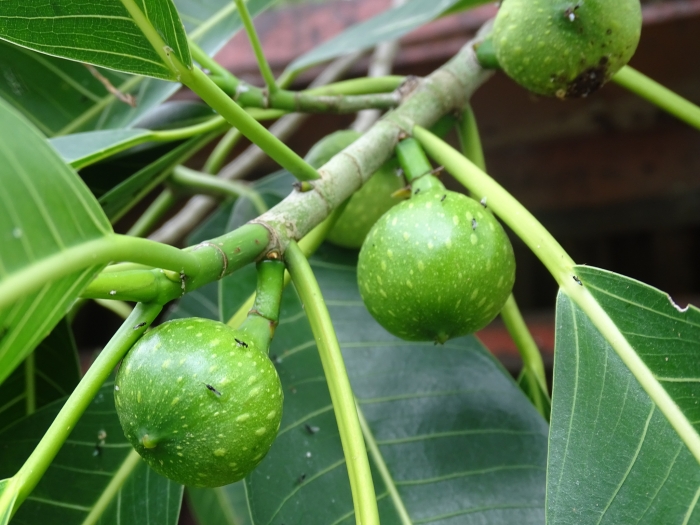Wild Fig
(Ficus insipida)
Wild Fig (Ficus insipida)
/
/

Alexis López Hernández
CC BY 4.0
Image By:
Alexis López Hernández
Recorded By:
Copyright:
CC BY 4.0
Copyright Notice:
Photo by: Alexis López Hernández | License Type: CC BY 4.0 | License URL: http://creativecommons.org/licenses/by/4.0/ | Rights Holder: Alexis López Hernández | Publisher: iNaturalist | Date Created: 2023-06-28T12:15:21-07:00 |



















Estimated Native Range
Summary
Ficus insipida, commonly known as the Wild Fig, is a deciduous tree native to a variety of neotropical forest habitats, including lowland rainforests, secondary forests, and areas along rivers from Mexico to northern South America. It can grow to a height of 26-131 feet (8-40 meters) with a broad canopy. The Wild Fig is characterized by its large, buttressed roots and a trunk with smooth, gray bark. It produces large, sweet figs that are greenish-yellow when ripe, typically during the wet season. These figs are a key food source for many animals, such as bats, monkeys, and birds.
The Wild Fig is valued for its rapid growth and ability to colonize disturbed areas, making it useful for reforestation projects. Its figs are not only important for wildlife but are also consumed by locals. The tree’s latex is used in traditional medicine, and the wood is harvested for timber. In cultivation, Ficus insipida prefers full sun to partial shade, requires ample water, and thrives in well-drained soils. While it is not commonly grown in urban settings due to its large size, it is sometimes planted in large gardens or parks. Gardeners should be aware of its potential to spread through root suckers, which can be aggressive.CC BY-SA 4.0
The Wild Fig is valued for its rapid growth and ability to colonize disturbed areas, making it useful for reforestation projects. Its figs are not only important for wildlife but are also consumed by locals. The tree’s latex is used in traditional medicine, and the wood is harvested for timber. In cultivation, Ficus insipida prefers full sun to partial shade, requires ample water, and thrives in well-drained soils. While it is not commonly grown in urban settings due to its large size, it is sometimes planted in large gardens or parks. Gardeners should be aware of its potential to spread through root suckers, which can be aggressive.CC BY-SA 4.0
Plant Description
- Plant Type: Tree
- Height: 26-125 feet
- Width: 15-26 feet
- Growth Rate: Rapid
- Flower Color: N/A
- Flowering Season: Spring, Summer
- Leaf Retention: Evergreen
Growth Requirements
- Sun: Full Sun, Part Shade
- Water: High
- Drainage: Medium
Common Uses
Bird Garden, Butterfly Garden, Erosion Control
Natural Habitat
Neotropical forest habitats including lowland rainforests, secondary forests, and riparian zones
Other Names
Common Names: White Fig, Banyan Fig, Oje, Wild Fig
Scientific Names: , Ficus insipida, Ficus glabrata var. typica, Galoglychia martinicensis, Pharmacosycea anthelminthica,
GBIF Accepted Name: